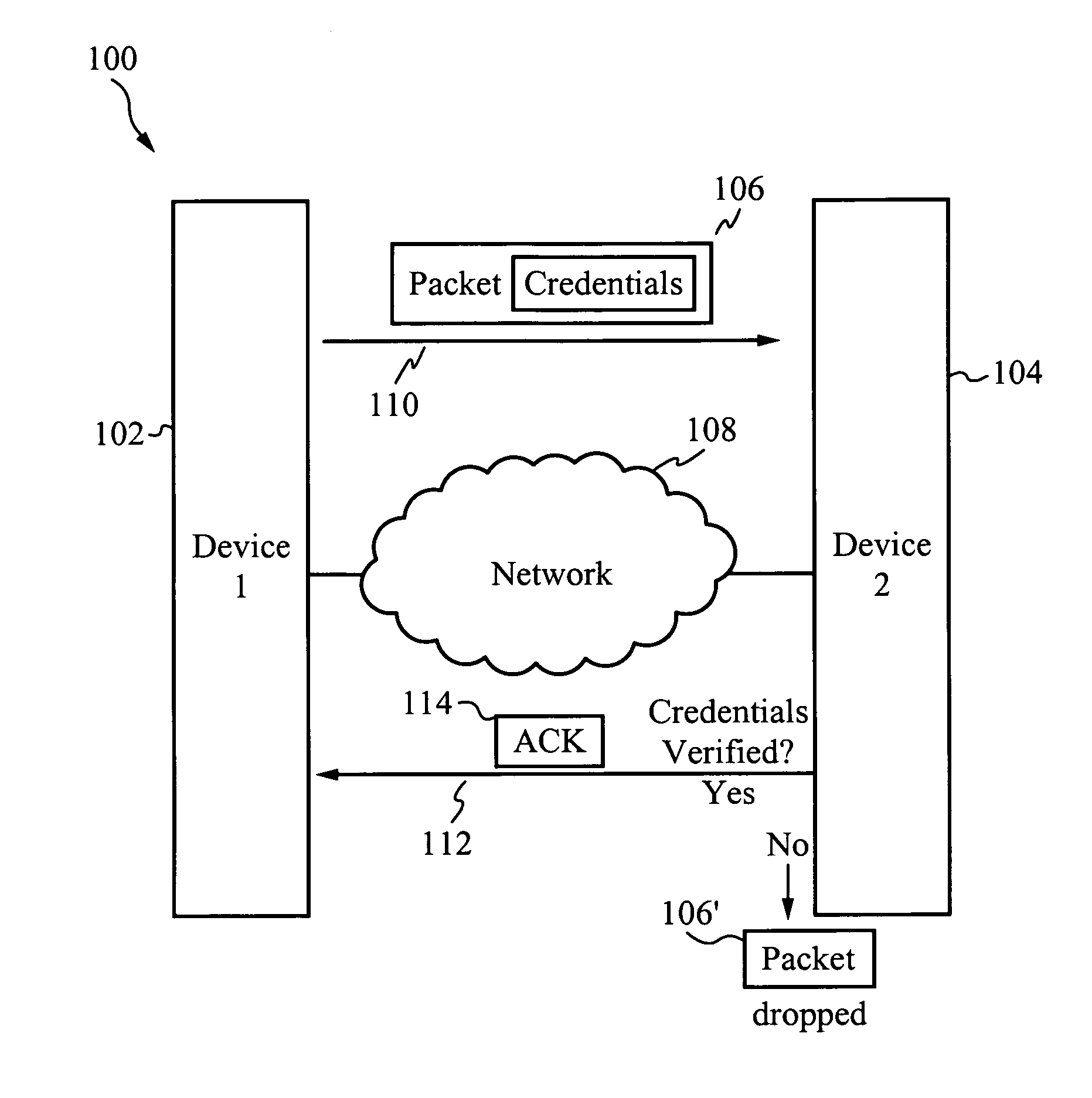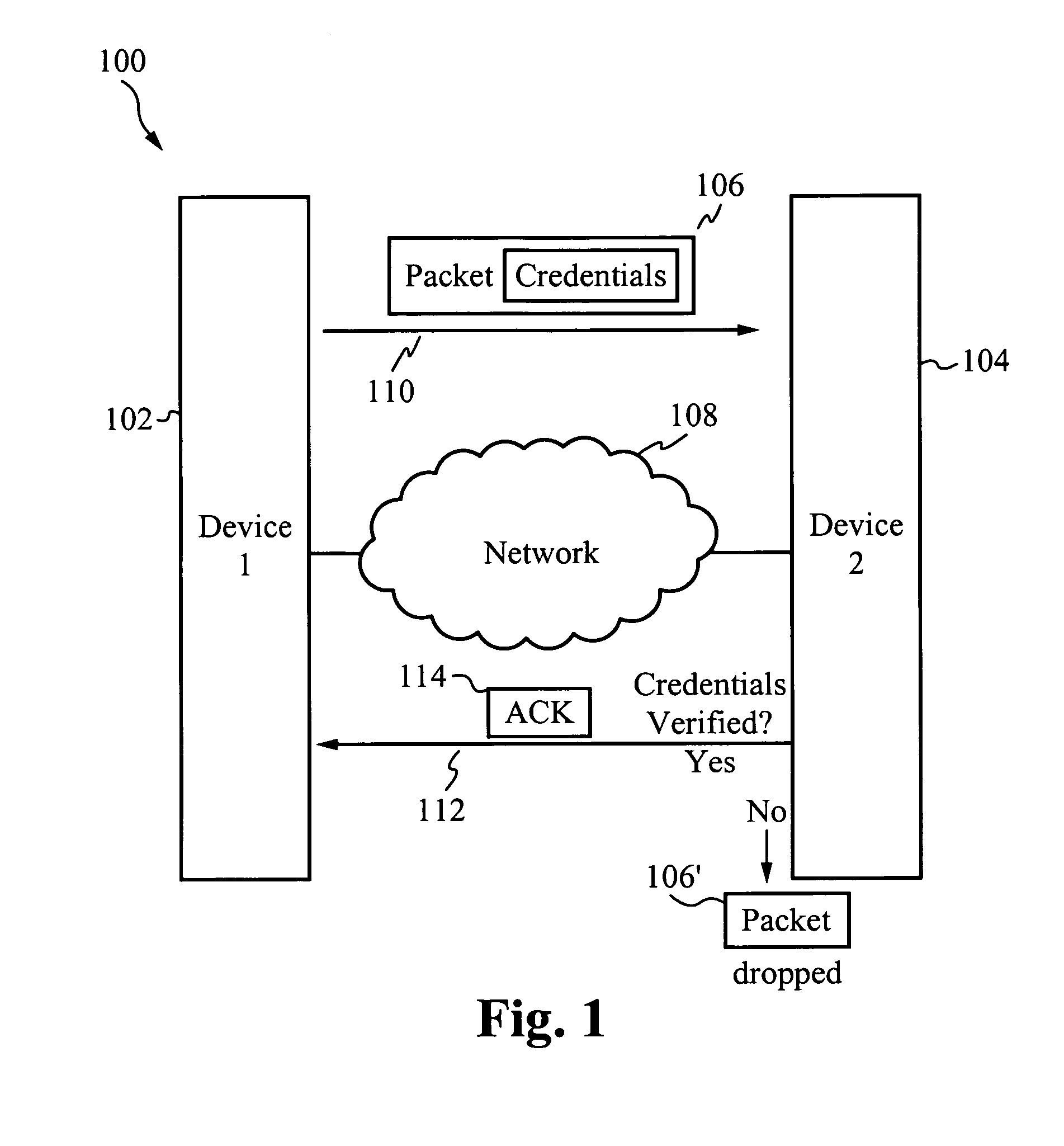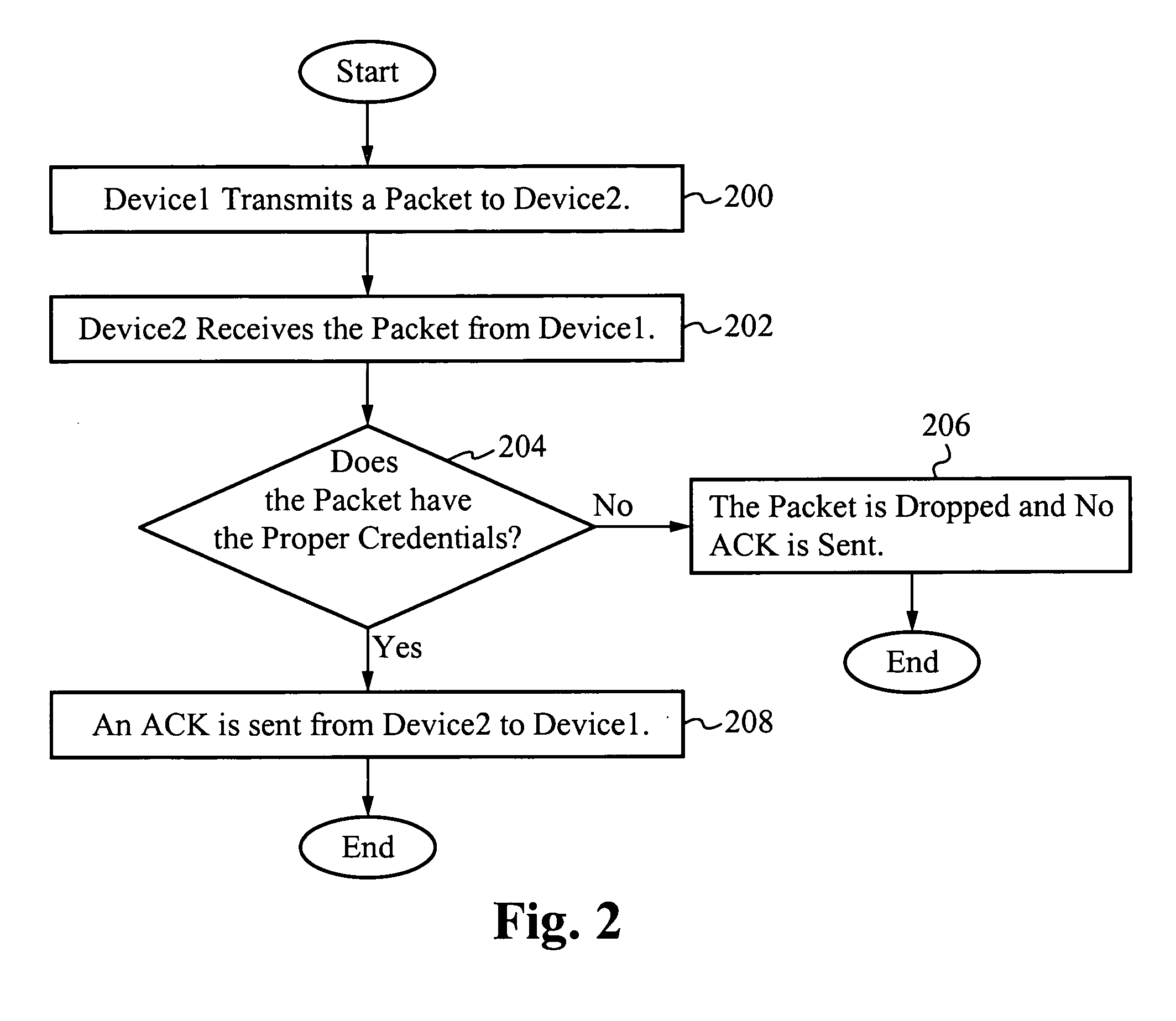[0008]In one aspect, a method of increasing network security comprises transmitting a packet from a first device to a second device, receiving a packet at the second device from the first device, verifying the packet for proper credentials and sending an acknowledgment from the second device to the first device only if the proper credentials are verified. The first device is a client and the second device is a server. Alternatively, the first device is a server and the second device is a client. The method further comprises dropping the packet if the proper credentials are not verified. A protocol for receiving the packet is similar to or the same as User Datagram Protocol. A protocol for sending an acknowledgment is similar to or the same as Transmission Control Protocol. The first device and the second device are coupled by a network. In one embodiment, the network is the Internet. In another embodiment, the network is an intranet.
[0009]In another aspect, a method of increasing network security comprises transmitting a packet from a first device to a second device, receiving a packet at the second device from the first device, verifying the packet for proper credentials, sending an acknowledgment from the second device to the first device only if the proper credentials are verified and dropping the packet if the proper credentials are not verified. The first device is a client and the second device is a server. Alternatively, the first device is a server and the second device is a client. A protocol for receiving the packet is similar to or the same as User Datagram Protocol. A protocol for sending an acknowledgment is similar to or the same as Transmission Control Protocol. The first device and the second device are coupled by a network. In one embodiment, the network is the Internet. In another embodiment, the network is an intranet.
[0010]In yet another aspect, a system for increasing network security comprises one or more first devices for transmitting a packet, one or more second devices for receiving the packet, wherein the one or more second devices are coupled to the one or more first devices through a network and a set of credentials within the packet for verification, wherein the one or more second devices send an acknowledgment back to the one or more first devices only if the set of credentials are verified. The first device is a client and the second device is a server. Alternatively, the first device is a server and the second device is a client. The one or more second devices drop the packet if the set of credentials are not verified. A protocol for receiving the packet is similar to or the same as User Datagram Protocol. A protocol for sending an acknowledgment is similar to or the same as Transmission Control Protocol. In one embodiment, the network is the Internet. In another embodiment, the network is an intranet.
[0011]In another aspect, a network of devices for increasing network security comprises one or more client devices for transmitting a packet, one or more server devices for receiving the packet, wherein the one or more server devices are coupled to the one or more client devices through a network and a set of credentials within the packet for verification, wherein the one or more server devices send an acknowledgment back to the one or more client devices only if the set of credentials are verified. The one or more server devices drop the packet if the set of credentials are not verified. A protocol for receiving the packet is similar to or the same as User Datagram Protocol. A protocol for sending an acknowledgment is similar to or the same as Transmission Control Protocol. In one embodiment, the network is the Internet. In another embodiment, the network is an intranet.
[0012]In yet another aspect, a packet for increasing network security comprises data and a set of credentials, wherein the set of credentials are analyzed by a receiving device such that the receiving device sends an acknowledgment back only if the set of credentials are valid. The set of credentials are selected from the group consisting of a key, a code and a signature. The set of credentials are stored within a header. Alternatively, the set of credentials are stored within a wrapper. The set of credentials are encrypted. The packet is substantially similar to a User Datagram Protocol packet.
 Login to View More
Login to View More  Login to View More
Login to View More 


